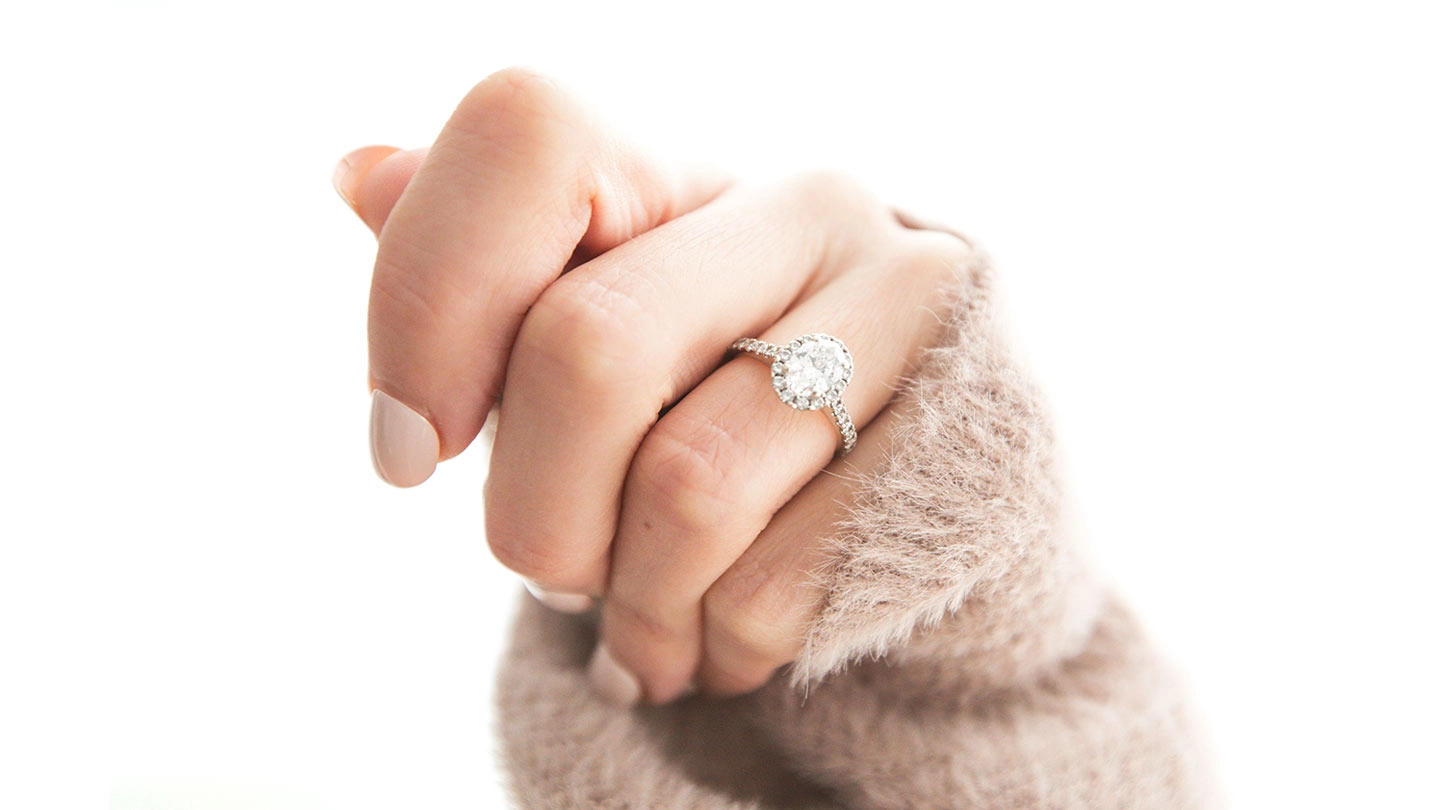Oval diamonds are a timeless and elegant choice for engagement rings, known for having a graceful, elongated shape that flatters the finger.
Oval diamonds offer a stunning mix of elegance and brilliance. With the sparkle of a round diamond and a unique, elongated shape, they’re a popular choice for engagement rings. In this blog, we’ll explore the history of oval diamonds and the key factors to consider when selecting the perfect one for your ring.
- Why are Oval Diamonds Popular?
- Anatomy of an Oval Diamond
- What to Look for in an Oval Diamond
- How to Minimize Bow Tie Effect
- What is the Best Ratio for Oval Cut Diamond?
- What is the Best Clarity for an Oval Cut Diamond?
- What are the Best Color Grades for an Oval Cut Diamond?
- Oval Diamond Engagement Ring Settings
- History of the Oval Diamond
- Famous Oval Diamonds
Why are Oval Diamonds Popular?
Oval diamonds are a favorite for many—and for good reason. Their elongated shape offers a larger surface area than round diamonds of the same carat weight, creating the illusion of a bigger, more impressive stone. This visual impact, combined with their graceful silhouette, gives oval diamonds a soft, romantic allure that naturally draws attention.
One of the standout benefits of an oval cut diamond is its flattering effect on the hand—it can make fingers appear longer and more slender, enhancing the overall elegance of the ring.
From a practical standpoint, oval diamonds are a smart choice too. Unlike shapes with sharp corners (like princess or marquise cuts), the smooth, rounded edges of an oval make it less prone to chipping, increasing its durability for everyday wear.
Loved for their perfect balance of timeless elegance and modern sophistication, oval diamonds continue to be a top pick for engagement rings—offering brilliance, beauty and a distinct yet classic look.
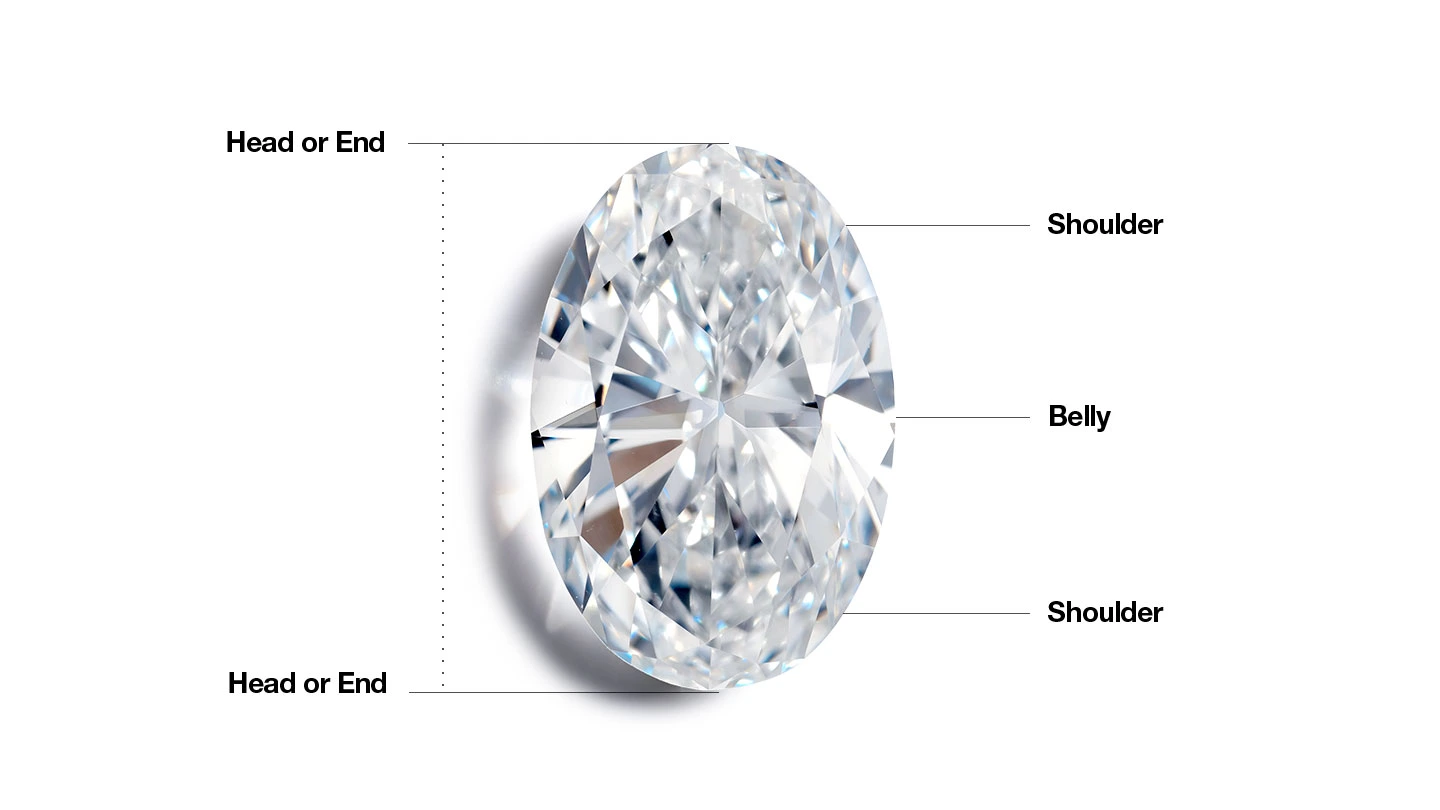
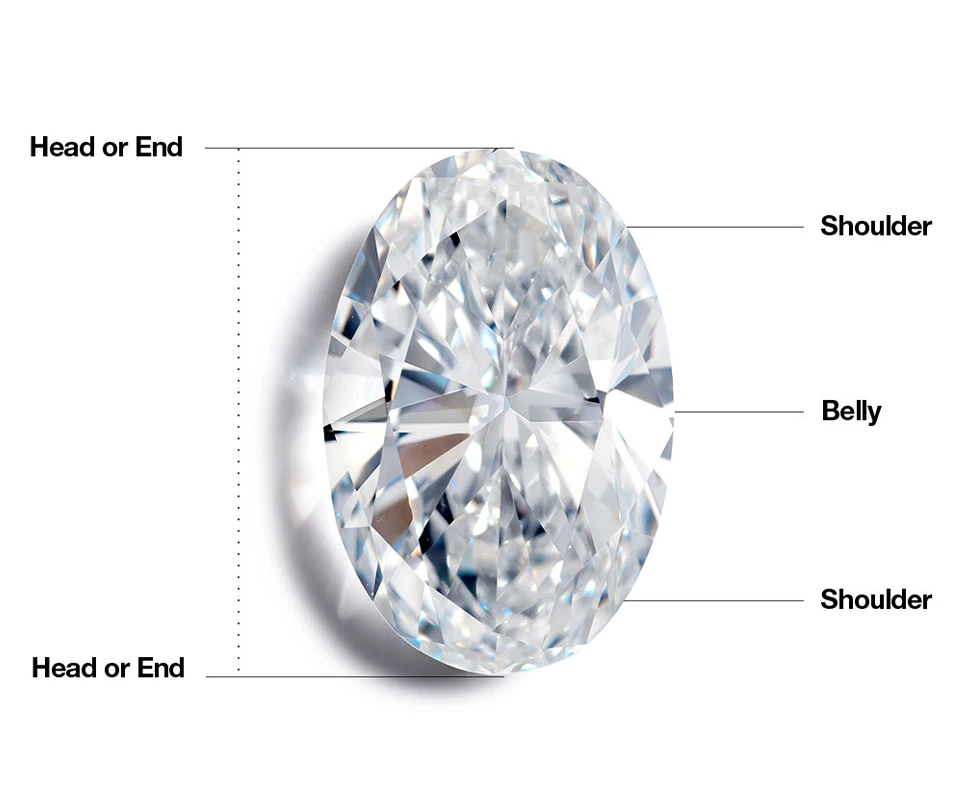
Anatomy of an Oval Diamond
An oval diamond is a fancy shape diamond. You can think of it as an elongated or stretched round brilliant diamond, or a rounded version of a cushion shape or cushion brilliant. To pick a beautiful oval diamond, you need to know its parts.
- Head or end: The “tips” at either end of the oval.
- Shoulder: The curved area connecting the head/end to the belly.
- Belly: The widest part of the oval where the sides curve out the most.
You’ll typically find oval diamonds cut in the brilliant faceting style, which means the diamond has 57 or 58 facets, like a standard round brilliant, giving it similar visual qualities. An oval diamond can have a variety of facet arrangements, but the most common is eight bezel facets on the crown combined with eight main facets on the pavilion.
What to Look for in an Oval Cut Diamond
When shopping for an oval diamond, the 4Cs of diamond quality—color, clarity, cut and carat weight—are your best starting points. GIA applies the same grading standards for color, clarity and carat weight to oval diamonds as it does for round brilliants, which can help you confidently narrow down your choices.
It’s important to note, however, that GIA only assigns an overall cut grade to round brilliant diamonds, since their standardized shape allows for consistent evaluation. Oval diamonds, being fancy shapes, do not receive a cut grade, since they can vary more in proportions and faceting style—but GIA still evaluates and reports on two critical aspects of cut: polish and symmetry. These grades offer valuable insight into the craftsmanship and overall finish of the diamond.
What is the Best Ratio for Oval Cut Diamond?
For a more rounded look, opt for a length-to-width (L/W) ratio between 1.30 and 1.40. Diamonds in this range have a gentle, harmonious appearance that many find pleasing.
For a more traditional oval shape, choose an L/W ratio between 1.40 and 1.50. This is the most popular range, offering a silhouette that feels both classic and elegant.
The length-to-width ratio is an important factor when selecting an oval diamond, as it determines the overall shape and visual appeal of the stone. This ratio is calculated by dividing the diamond’s length by its width, and it gives insight into whether the diamond is more elongated or more rounded.
Many people prefer oval diamonds with a length-to-width ratio between 1.30:1 and 1.50:1. These proportions strike a pleasing balance—not too long and narrow, and not too short and wide.
- 1.20:1 to 1.29:1 – These ovals appear shorter and rounder and may resemble a rounded cushion or even a slightly off-round stone.
- 1.30:1 to 1.40:1 – This offers a gently elongated look that flatters most fingers and works well in a variety of settings.
- 1.41:1 to 1.50:1 – These longer ovals are often chosen for their slimming effect on the finger or for a more dramatic appearance.
- Above 1.50:1 – These long, narrow ovals are rarely seen, as it is impractical to cut them from diamond crystals. Some may show a more pronounced “bow-tie” effect (a dark shadow across the center), which is common in elongated fancy cuts.
When choosing an oval diamond, it’s always a good idea to view it in person or request videos, since proportions and bow-tie visibility can vary even in diamonds within the same length-to-width range.
Excellent Symmetry
GIA evaluates symmetry on a scale from Excellent to Poor. For oval diamonds, Excellent or Very Good symmetry plays a key role in achieving a beautiful, balanced appearance. To determine if an oval diamond is symmetrical, draw an imaginary line down the center. The shape and faceting of the two halves should mirror each other. Then draw an imaginary line across the middle of the oval. Again, the shape and faceting of the two halves should be identical. The culet facet should be dead center.
Shape Appeal
A well-cut oval should have balanced proportions, with no flat spots or overly bulging shoulders that can distort its outline. Flat shoulders can make an oval diamond slightly marquise shaped, while bulging shoulders can make an oval diamond slightly pill-shaped. A graceful, symmetrical oval should appear evenly curved on both ends, with smooth lines that enhance its brilliance and elegance.
Medium Girdle Thickness
The girdle is the narrow edge where a diamond’s crown meets its pavilion. It defines the stone’s outline and acts as the point of contact for setting the diamond in jewelry. Girdle thickness is described using terms like Thin, Medium or Thick in the GIA Diamond Grading Report.
You can find this information in the report’s proportion diagram, which shows the range of girdle thickness across the diamond. A girdle that is too thick can make the diamond heavier without increasing its visible size, while an extremely thin girdle may increase the risk of chipping or other damage.
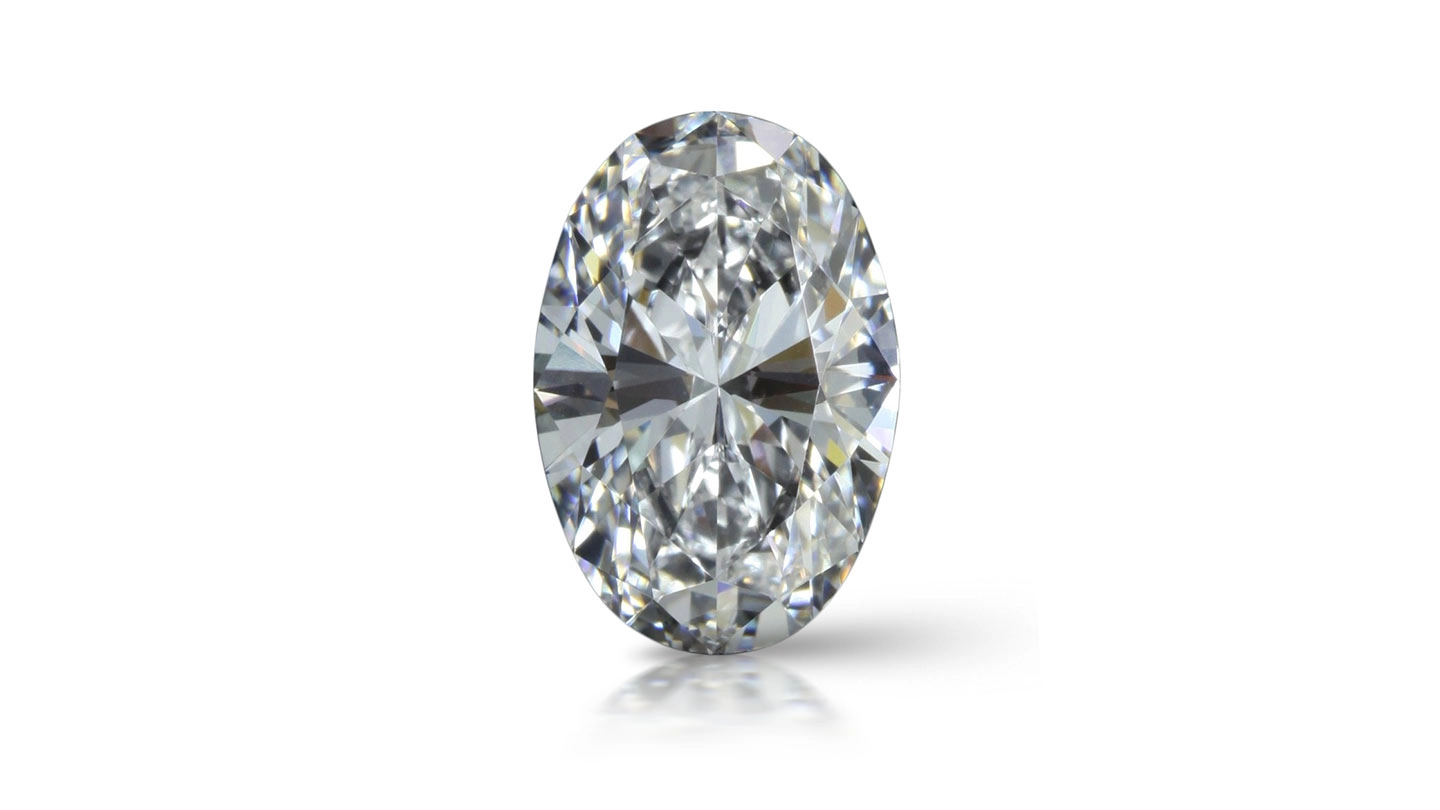
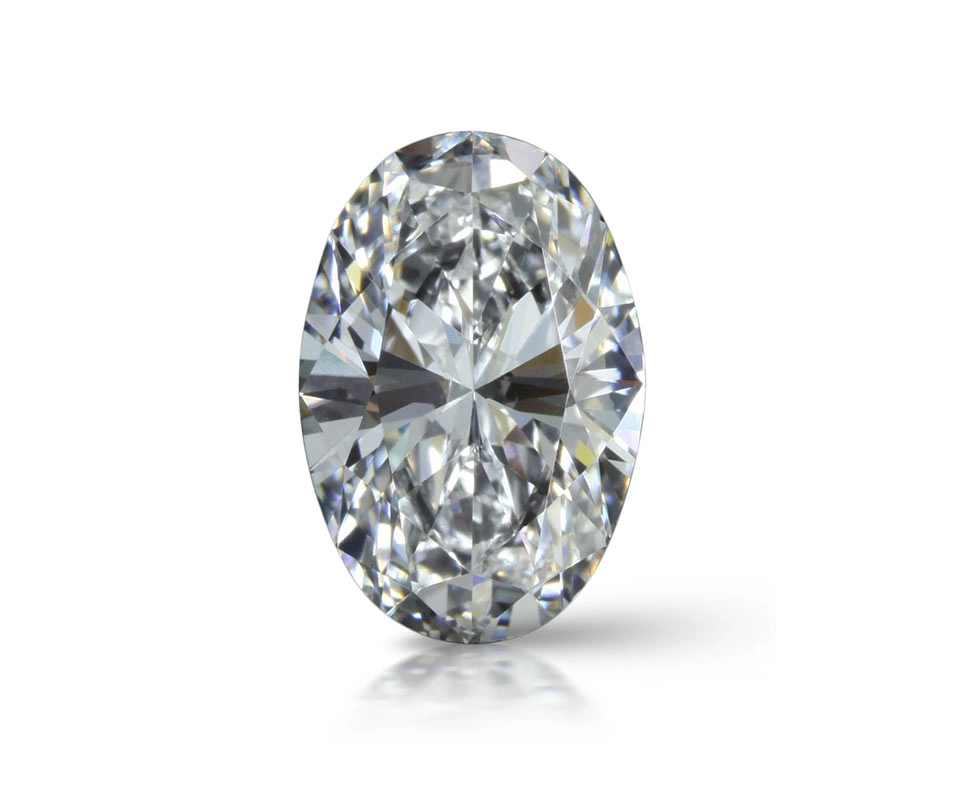
Minimal Bow Tie Effect
A diamond’s facets function like tiny mirrors, capturing light from your surroundings and reflecting it back to your eye. The bow tie effect occurs when part of that light is blocked—specifically by your own head and shoulders—as you look at the diamond. This creates areas of contrast that appear as a darkened “bowtie” shape across the center. The closer your face is to the diamond, the more pronounced the bow tie will seem.
A well-cut oval diamond will minimize the bow tie, dispersing light more evenly across the stone. However, due to the nature of the shape and faceting pattern, some degree of bow tie is always present—and it can even add character and dimension when it’s subtle and balanced.
What is the Best Clarity for an Oval Cut Diamond?
The ideal clarity grade for an oval diamond depends on your personal preferences and budget. For many buyers, a grade of VS2 (Very Slightly Included) or SI1 (Slightly Included) offers the best balance of value and appearance. At these levels, inclusions are typically small and difficult to see without magnification, especially in oval brilliant cuts, which do a good job of masking imperfections—particularly near the edges or under the facets.
If you’re seeking a premium stone, you may prefer higher clarity grades such as VVS1 or VVS2 (Very, Very Slightly Included) or IF (Internally Flawless) to Flawless. These stones are extremely clean but command a much higher price.
Ultimately, many inclusions in VS2 or even well-selected SI1 diamonds will go unnoticed in a well-cut oval, making them excellent options for maximizing both beauty and value.
What are the Best Color Grades for an Oval Cut Diamond?
The best color grade for an oval diamond ultimately depends on personal preference and budget. That said, diamonds in the G–H range on the GIA color scale—classified as near colorless—often offer the ideal balance between beauty and value. Because oval diamonds have an elongated shape, they tend to show more color at the tips. Staying within the G–H range helps ensure the diamond appears bright and “white” to the eye.
For a more budget-friendly option, a J color diamond can still look beautiful, especially when set in yellow or rose gold, which complements the stone’s natural warmth. Cool color metals may make the warm color of the diamond stand out more. On the other hand, if you’re aiming for the most colorless appearance, diamonds in the D–F range, set in white gold or platinum, provide the highest level of color purity.
Oval Diamond Engagement Ring Settings
Oval diamonds offer a timeless, elegant shape—and when it comes to engagement rings, the setting you choose can dramatically impact the overall look. Here are some of the most popular and stylish settings to consider for your oval diamond ring:
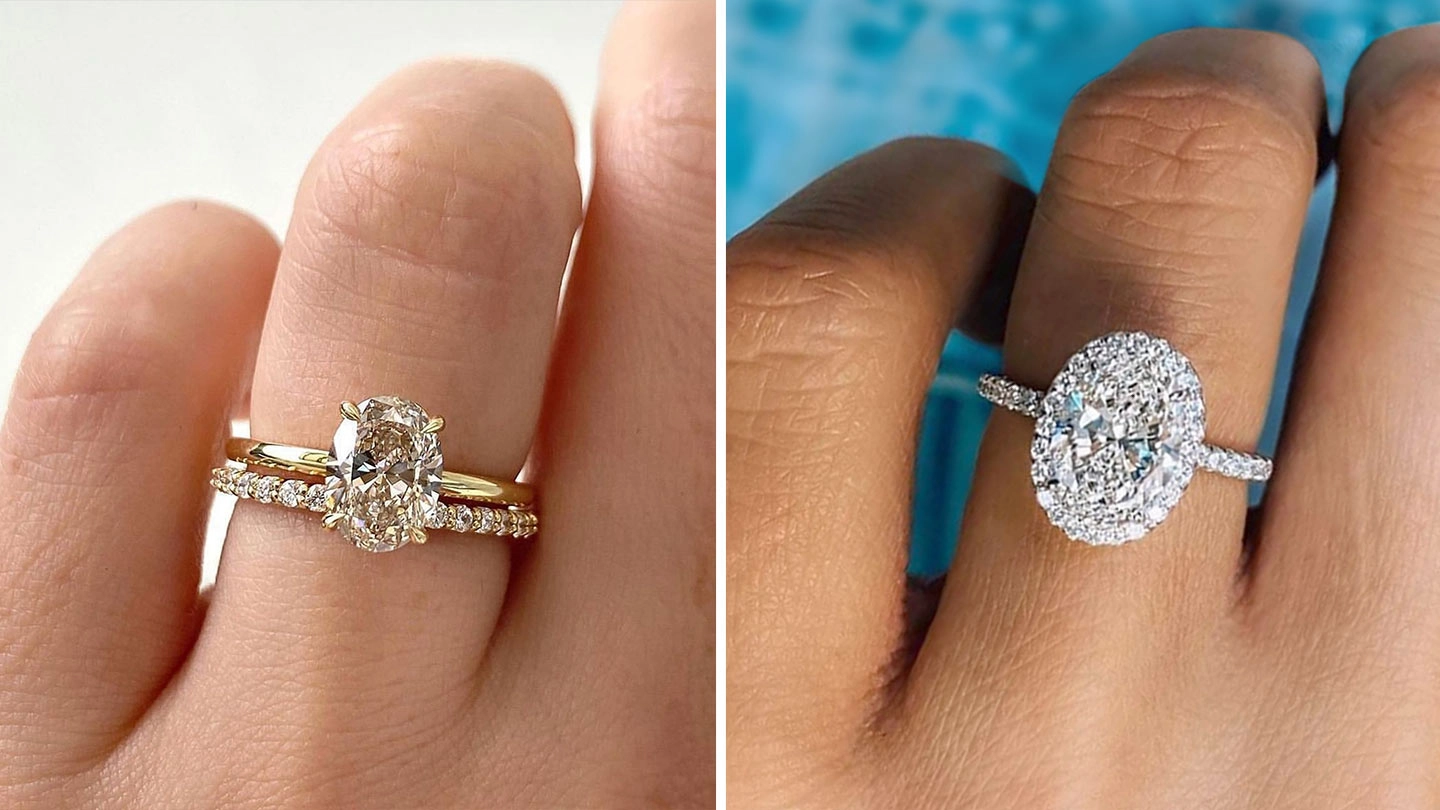
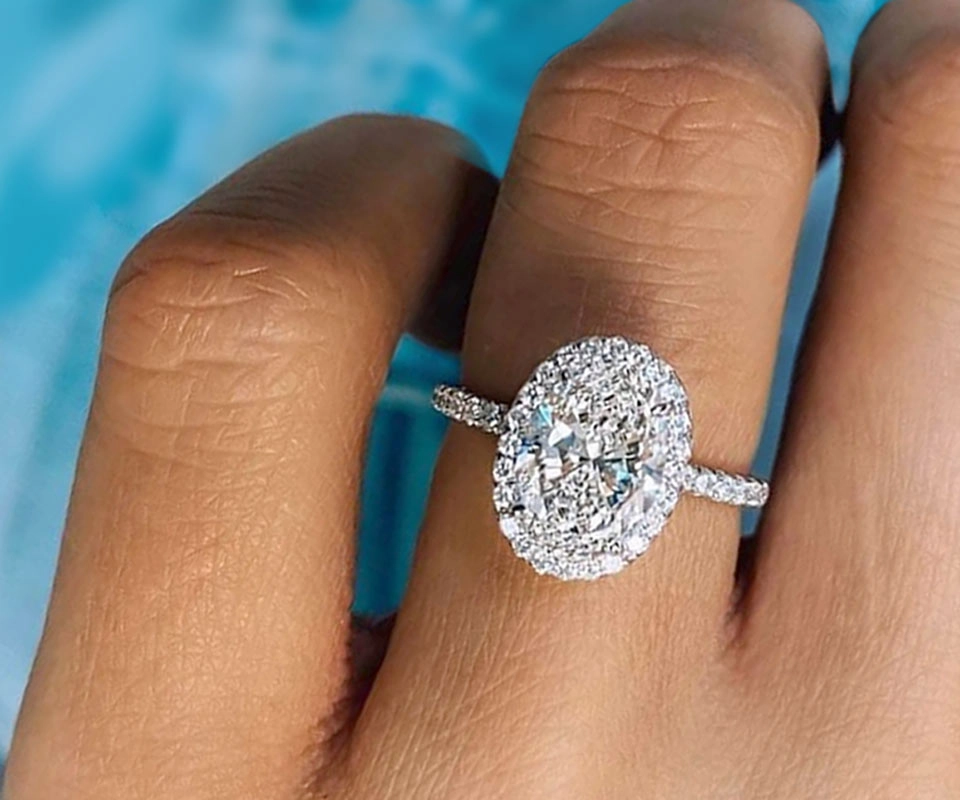
Halo Setting
A halo of smaller diamonds surrounding the oval center stone enhances brilliance and makes the diamond appear larger. This setting emphasizes the shape of the oval and can create a striking look, especially when paired with contrasting metals or colored accent stones.
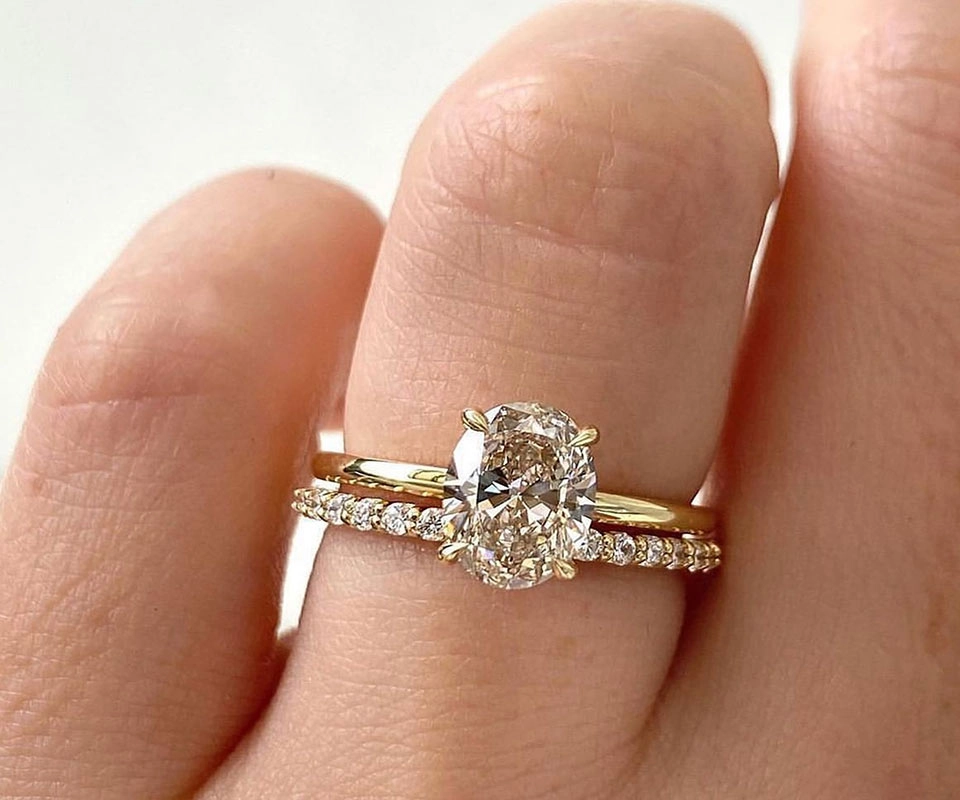
Prong Setting
Prong settings are a classic choice for oval diamonds. They securely hold the stone in place while allowing maximum light to pass through, enhancing sparkle.
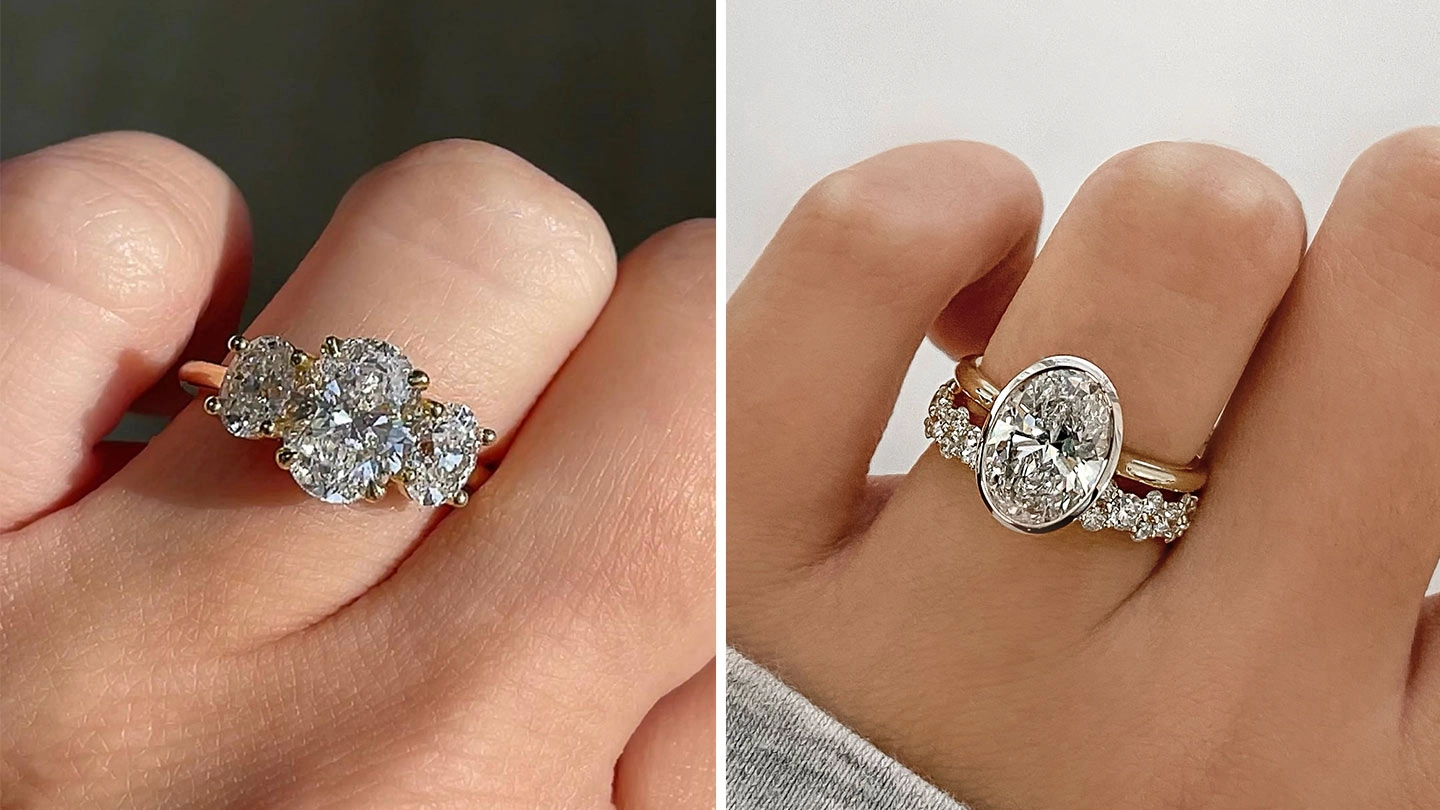
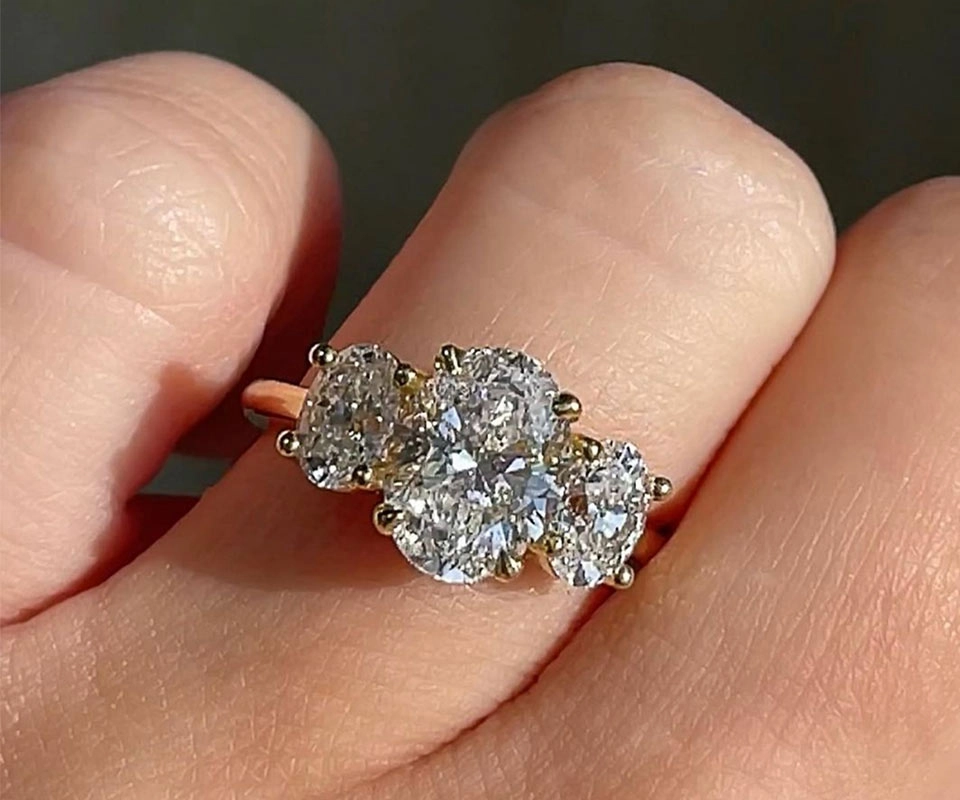
Side Stones
Oval diamonds pair well with a variety of side stones for a three-stone or five-stone ring. Half-moon or oval diamonds mirror the oval shape and create a harmonious look, while tapered baguette stones offer contrast and a more geometric aesthetic. Colored gemstones can add a unique touch. For a cohesive appearance, choose diamond side stones within one to two color grades of the center diamond.
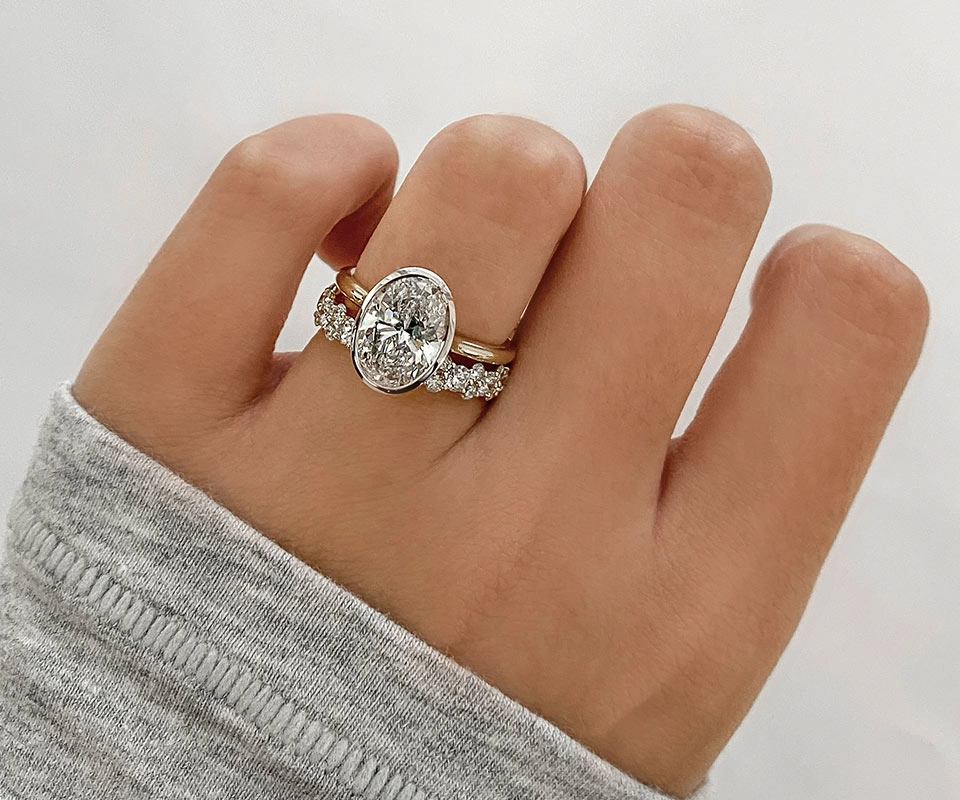
Bezel Setting
A bezel setting encircles the diamond with a thin band of metal, offering excellent protection while maintaining a sleek, modern look. This setting is ideal for those with active lifestyles, and it beautifully complements the soft curves of an oval diamond.
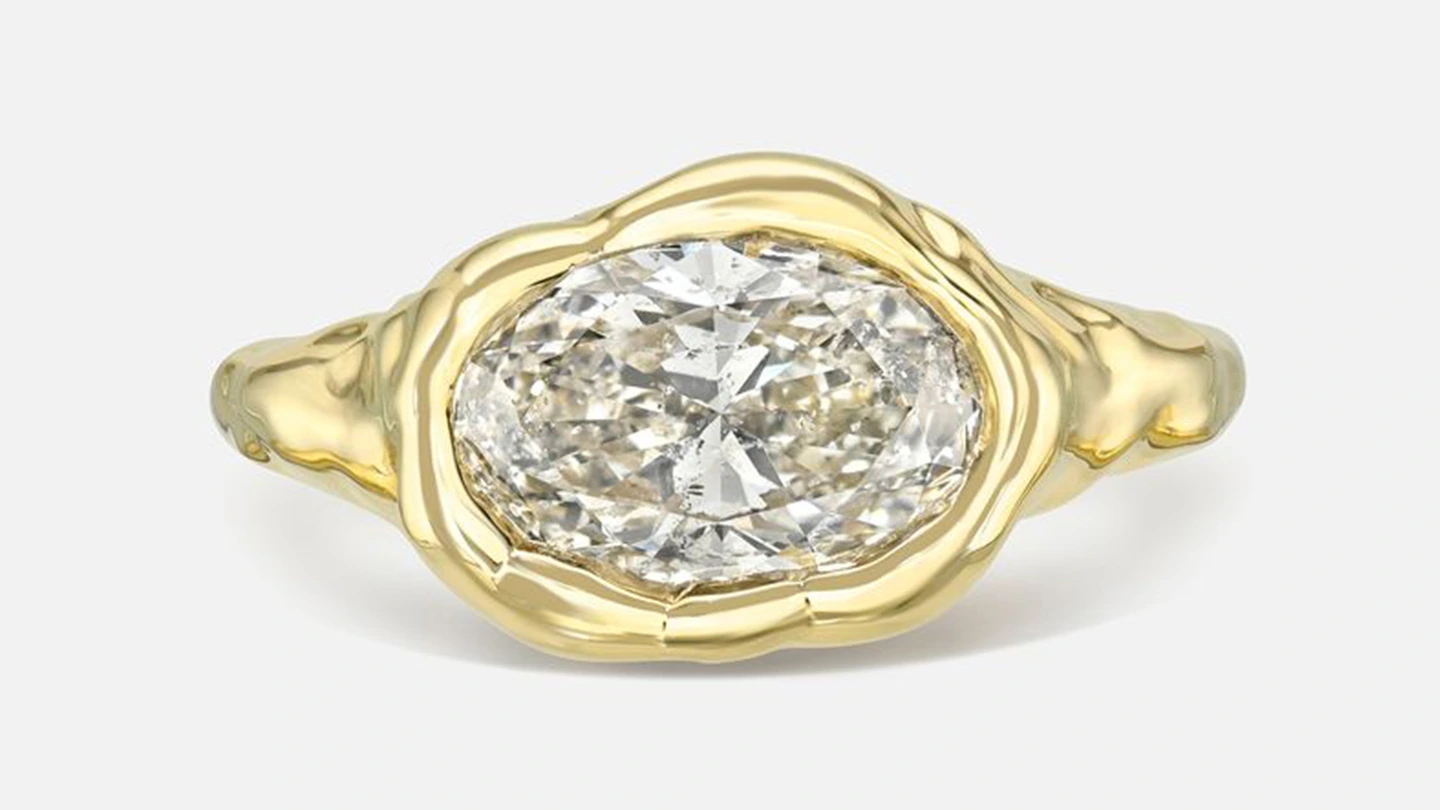
This east-west ring showcases a 2.04-carat oval diamond in a melted, organic-style setting that's sure to melt any heart with its unique design.
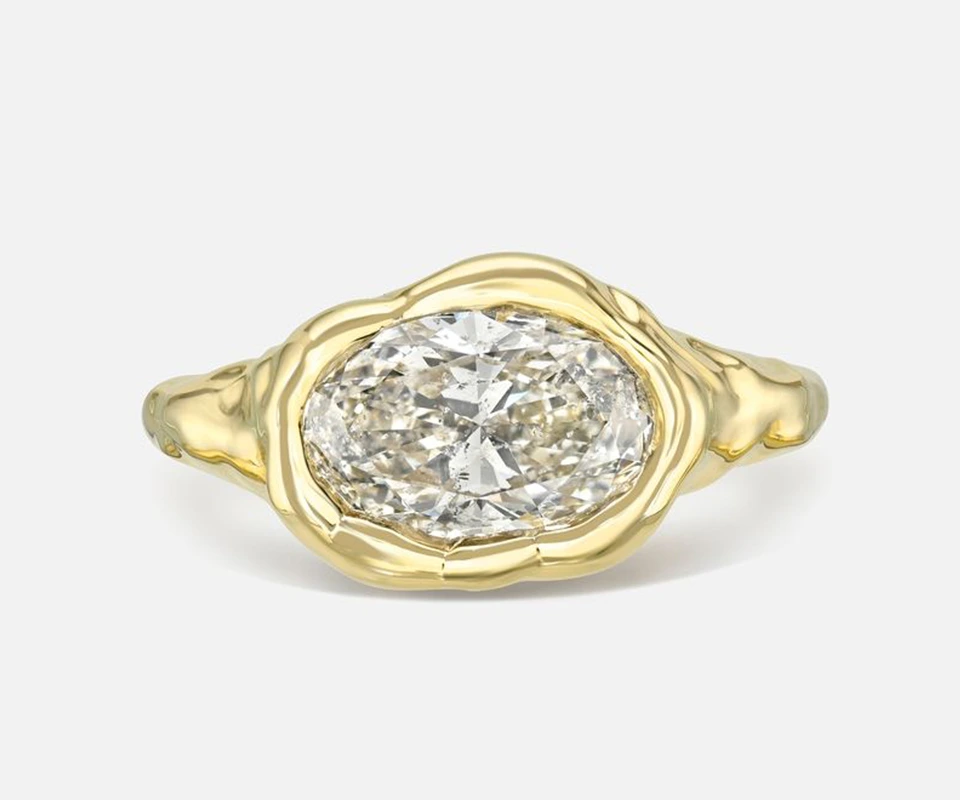
This east-west ring showcases a 2.04-carat oval diamond in a melted, organic-style setting that's sure to melt any heart with its unique design.
East-West Setting
For a contemporary twist, consider an east-west setting, where the oval diamond is set horizontally across the finger instead of vertically. This modern design creates a unique, fashion-forward look. East-west settings are particularly striking in minimalist or bezel-set styles and can make even a modestly sized diamond appear larger and more distinctive.
Band Widths
Broader bands offer a modern, bold look and can enhance the overall presence of the ring. In contrast, thinner bands create a more delicate appearance and can make larger stones appear even more prominent.
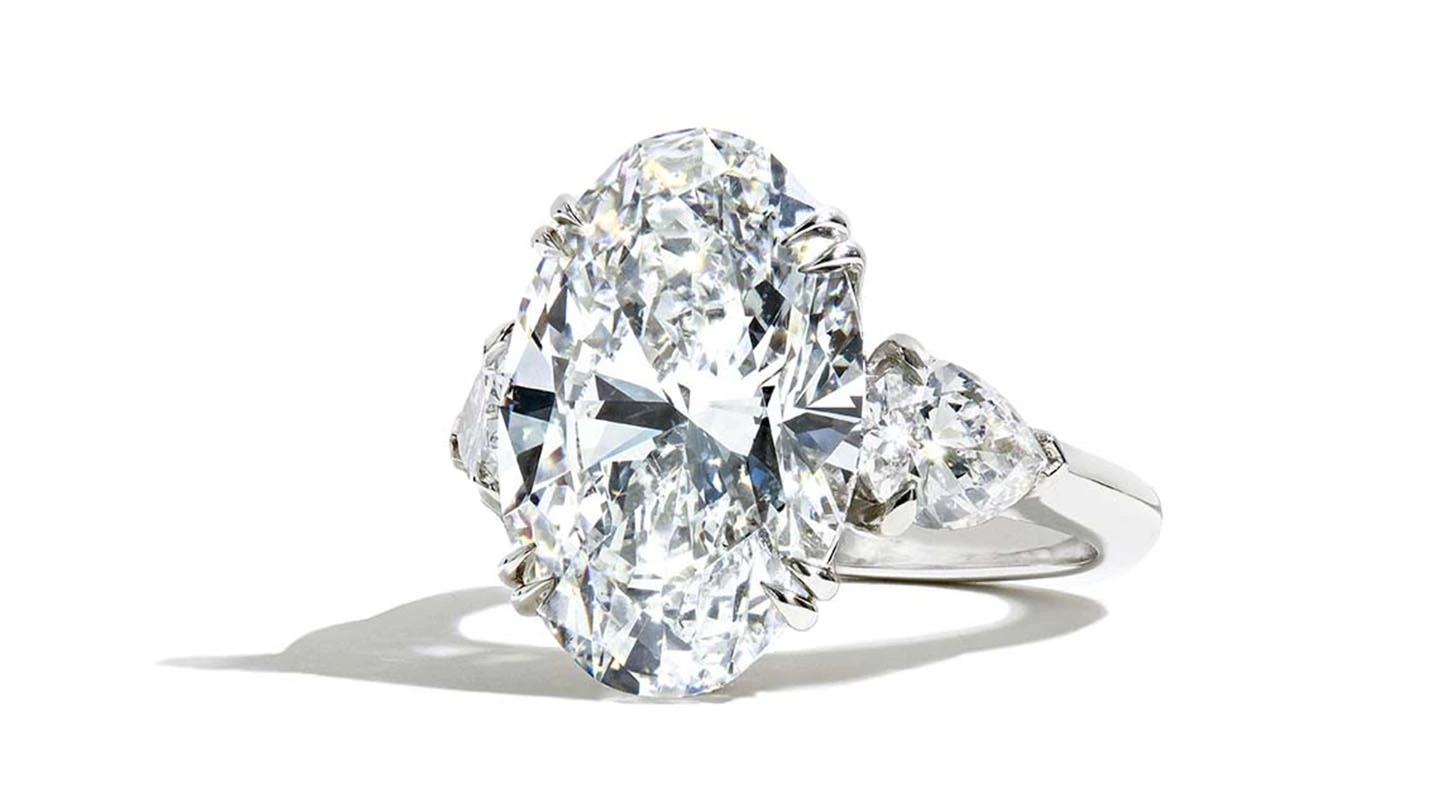
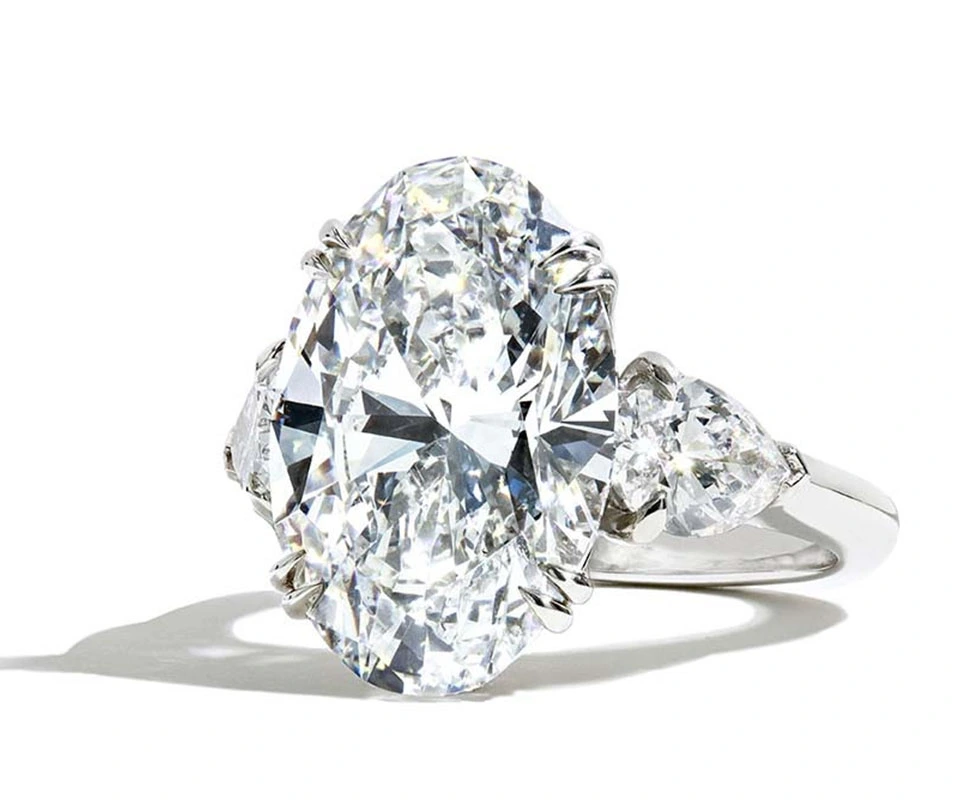
History of the Oval Diamond
The brilliant faceting style first emerged around 1700, marking a shift in diamond cutting toward maximizing light performance. During this early period, cutters typically followed the natural contours of the diamond crystal, resulting in cushion-shaped brilliants—though elongated shapes like ovals also appeared. These diamonds were not categorized by shape at the time; rather, they were simply referred to as “brilliants,” regardless of their outline. It wasn’t until the late 1800s that gemological literature began to reference specific shapes like the oval, distinguishing them from other faceted forms.
The modern oval brilliant cut was developed in 1957 by diamond cutter Lazare Kaplan. His design featured 58 facets and brought together the sparkle of a round brilliant with a more elongated, elegant silhouette. The oval diamond saw a resurgence in popularity between the late 1990s and early 2000s, in part due to increased marketing and changing fashion trends. More recently, the shape has experienced another revival, driven by celebrity engagement rings and a growing preference for elongated stones that flatter the finger.
According to The Knot’s 2023 Real Wedding Study, oval diamonds accounted for 23% of all engagement rings purchased that year, reflecting their strong appeal among modern couples. Earlier, in 2016, Town & Country magazine ranked the oval diamond as the sixth most popular shape among American consumers, with round diamonds maintaining their top position. This consistent popularity reinforces the oval diamond’s enduring versatility and timeless charm.
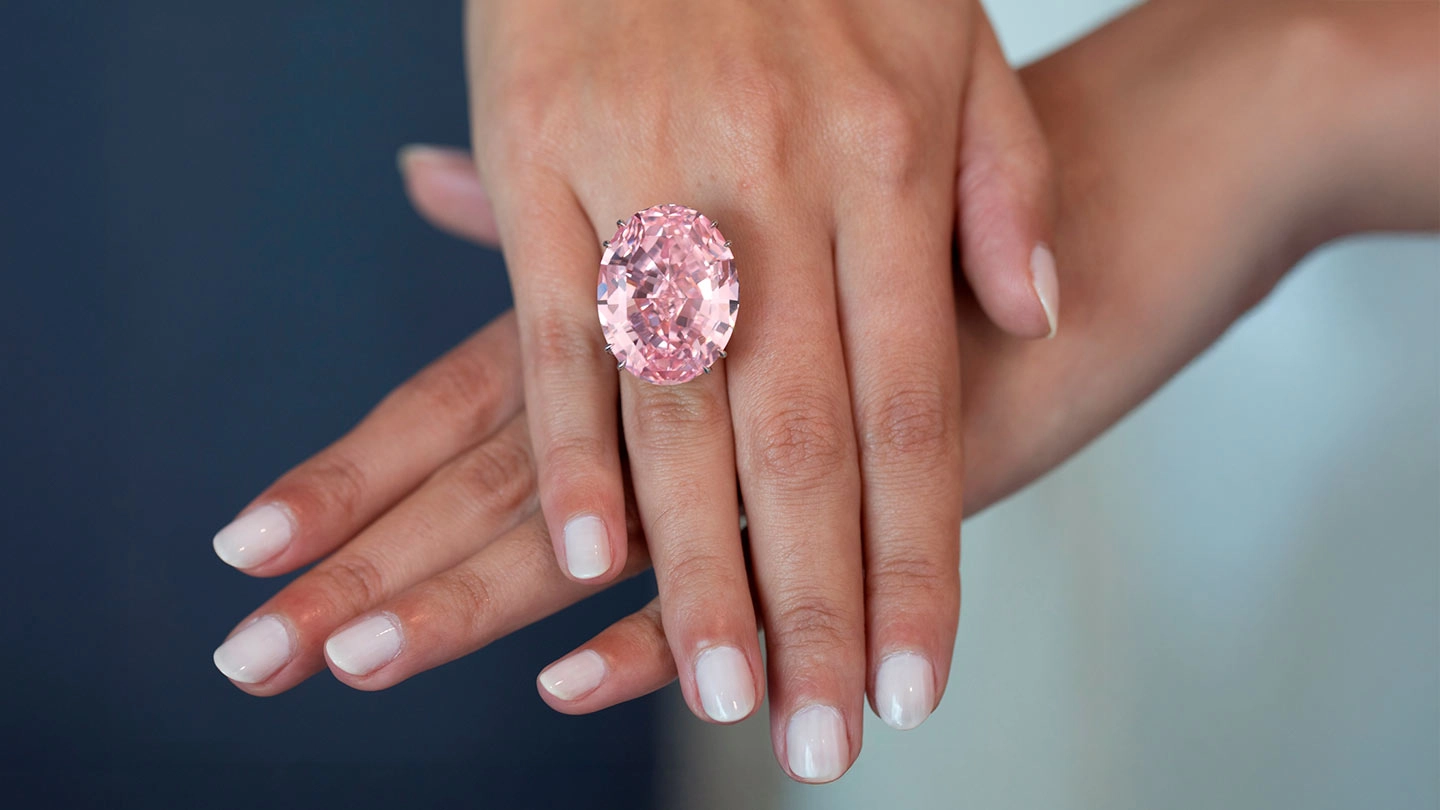
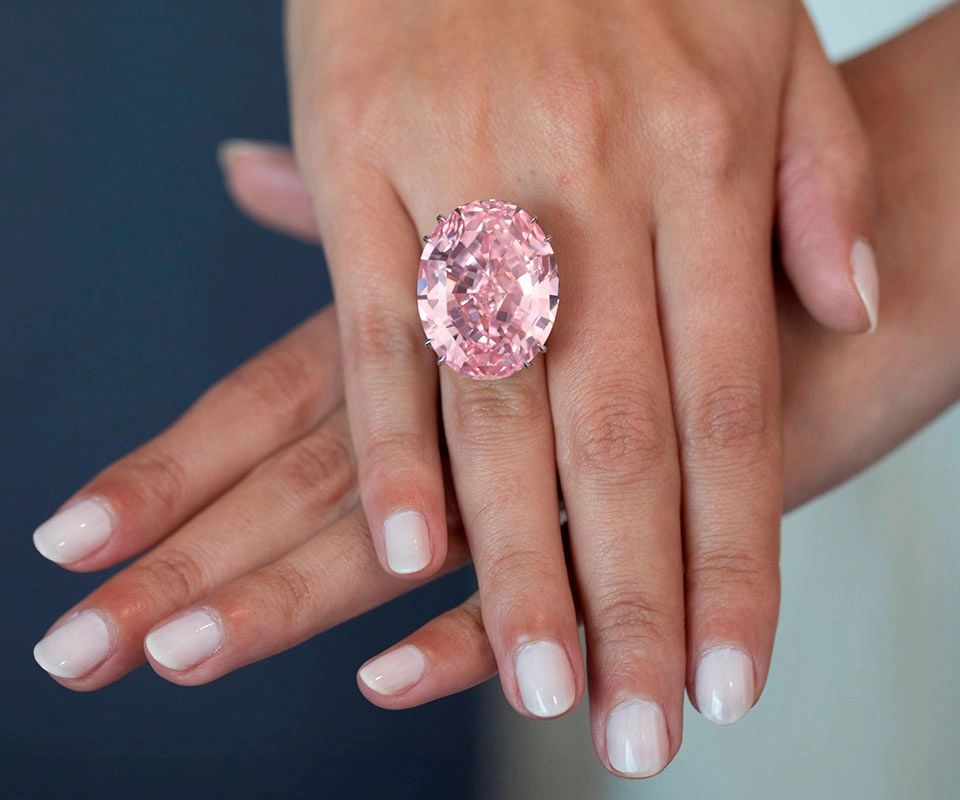
Famous Oval Diamonds
The Koh-i-Noor, weighing 105.60 carats, is arguably the most famous oval-shaped diamond in the world. It passed through the hands of Persian and Indian rulers before being ceded to Queen Victoria in 1850 during British colonial rule. Now set in the Queen Mother’s Crown and displayed in the Tower of London, the diamond has been the subject of historical and political disputes over rightful ownership.
More recently, the CTF Pink Star captured global attention in April 2017 when it sold at Sotheby’s for a record-breaking $71.2 million. Mined by De Beers in Africa in 1999, the original 132.50-carat rough was cut over two years into a 59.60-carat Internally Flawless, Fancy Vivid Pink oval. Now known as the CTF Pink Star—named after Chow Tai Fook, the company that purchased it—it remains the most expensive diamond ever sold at auction.
Explore Other Fancy Shapes for Your Engagement Ring
With its elongated silhouette and dazzling brilliance, the oval diamond is a timeless yet distinctive choice—blending classic beauty with a touch of modern flair. If you’re looking to create a diamond engagement ring that’s out of the ordinary, there are many more fancy shapes to choose from.
Learn more about other types of fancy-cut diamonds to find the right cut for you.
